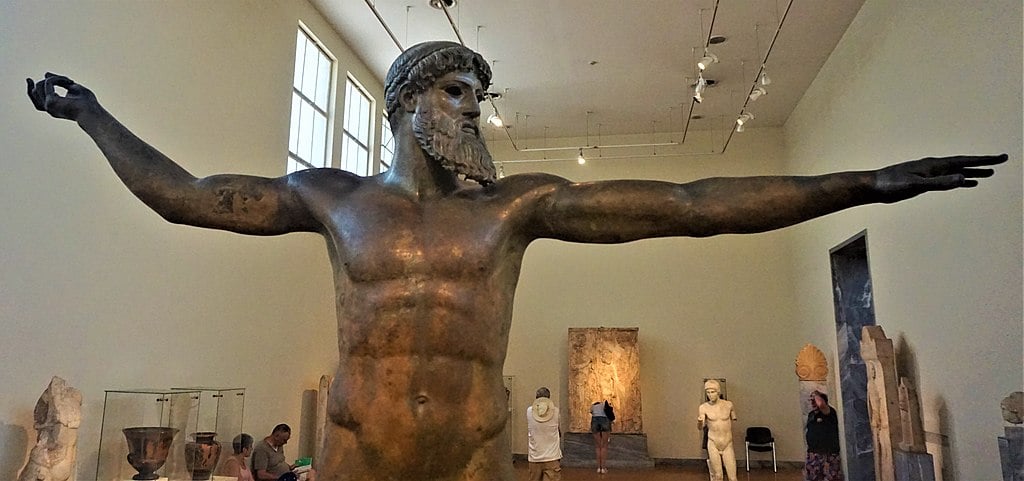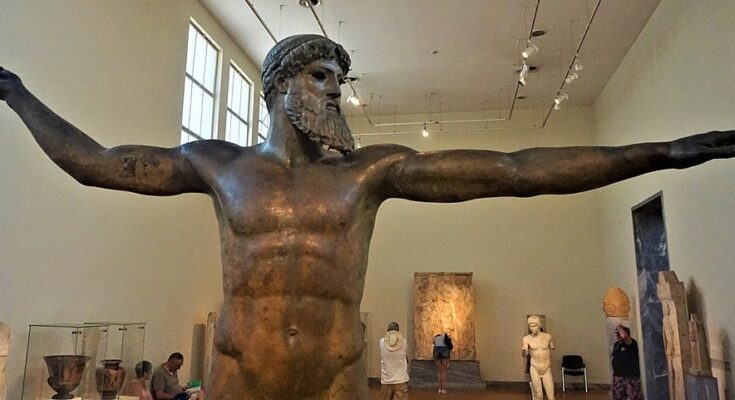
Many ancient Greek statues depict male figures with what we might consider today to be small penises. This is quite intentional and reflects the different cultural values of the period.
A woman’s explanation of why ancient Greek statues have small penises has recently gone viral on TikTok.
Ruby Reign took it upon herself to look into the matter. “Have you ever wondered why so many ancient Greek statues have colossal muscular physiques and yet a tiny package?” she asked in a video shared on her TikTok.
“What I wasn’t aware of was that the Greeks often presented their enemies, the Egyptians, the satirical creatures, and even fools in comedies as having large appendages—so it was quite a negative thing to have, which is quite different today,” she said.
“So actually, what I discovered was that big D’s bad and small D’s good in ancient Greece. But why was this?” inquired Reign. “This is obviously different to today.”
Small penises in Greek statues are “a sign of virtue, of civility”
Ruby claimed it is all to do with how perceptions have changed. She explained: “Turns out that in ancient Greece, having a smaller package was considered a sign of virtue, of civility, or self-control or discipline.”
“Meanwhile, having a bigger one was a sign of lustfulness, of gluttonous appetites and barbarism, which is quite interesting because it’s different from today,” she added.
Together, Ruby’s clips have racked up more than four million views, Lad Bible says with many people in the small willy community delighted by the lecture.
One person commented: “Remember lads we were on top, now the Barbarians have taken over.”
Another said: “We definitely gotta return to our roots.”
A third added: “I was really born in the wrong generation.”
Ruby concluded that our changing perceptions of size illuminate that there is no objective beauty.
She said: “I just think it’s interesting to compare the perspective back then that smaller is better with the view today that, sometimes people think bigger is better.
“And it just goes to show that our beauty standards, our ideals, are all a social construct and we shouldn’t get bogged down feeling bad about ourselves,” she concluded.
The small penis was consonant with Greek ideals of male beauty
In the ancient Greek world of around 400 BC, erect penises were considered neither desirable nor a sign of power or strength.
In his play The Clouds (c. 419–423 BC), ancient Greek playwright, Aristophanes, summed up the ideal traits of his male peers as “a gleaming chest, bright skin, broad shoulders, tiny tongue, strong buttocks, and a little prick.”
Historian Paul Chrystal has also conducted research into this ancient ideal. “The small penis was consonant with Greek ideals of male beauty,” he writes in his book In Bed with the Ancient Greeks (2016). “It was a badge of the highest culture and a paragon of civilization.”
Lustful, depraved satyrs, in particular, were rendered with huge, erect genitals, sometimes almost as tall as their torsos. According to mythology, these creatures were part-man, part animal, and lacked restraint—a quality reviled by Greek high society.
“Big penises were vulgar and outside the cultural norm, something sported by the barbarians of the world,” writes Chrystal. Indeed, across many an amphora pot and frieze, well-endowed satyrs can be seen drinking and pleasuring themselves with abandon.
Related: The Erotic Art of Ancient Greece



